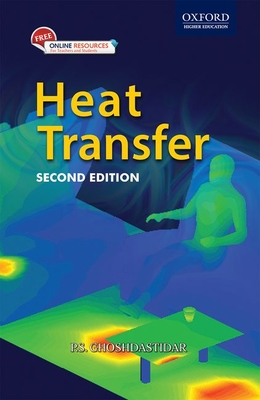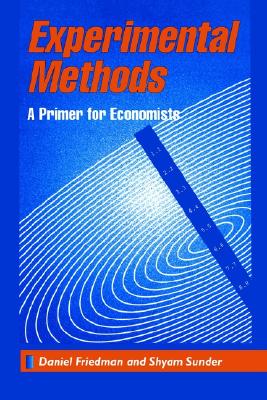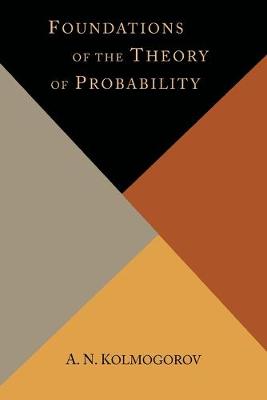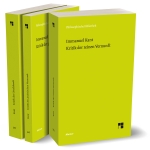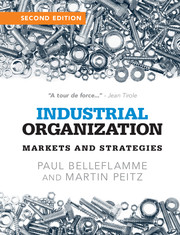图书简介
Heat Transfer 2e is a comprehensive textbook aimed at undergraduate students of mechanical, chemical, metallurgical, and aerospace engineering. It will also serve as a useful text to postgraduate students specializing in thermal sciences, practising engineers, and researchers.
1 Introduction; 1.1 Aims of Studying Heat Transfer; 1.2 Applications of Heat Transfer; 1.3 Basic Modes of Heat Transfer; 1.4 Thermal Conductivity; 2 Steady State Conduction: One-dimensional Problems; 2 Steady State Conduction: One-dimensional Problems; 2.1 Introduction; 2.2 Fourier’s Law of Heat Conduction; 2.3.1 Fourier’s Law in Cylindrical and Spherical Coordinates; 2.3 The Heat Conduction Equation for Isotropic Materials; 2.3.1 Heat Conduction Equation in Cylindrical Coordinate System; 2.3.2 Heat Conduction Equation in Spherical Coordinate System; 2.4 Heat Conduction Equation for Anisotropic Materials; 2.5 Initial and Boundary Conditions; 2.5.1 Initial Condition; 2.5.2 Boundary Conditions; 2.5.3 Number of Initial and Boundary Conditions; 2.6 Simple One-Dimensional Steady Conduction Problems; 2.6.1 Plane Wall; 2.6.2 Hollow Cylinder; 2.6.3 The Composite Tube; 2.6.4 Hollow Sphere; 2.8 Overall Heat Transfer Coefficient; 2.9 Critical Thickness of Insulation; 2.10 Heat Generation in a Body: Plane Wall; 2.11 Heat Generation in a Solid Cylinder; 2.12 Heat Generation in a Solid Sphere; 2.13 The Thin Rod; 2.14 Thermometer Well Errors due to Conduction; 2.15 Extended Surfaces: Fins; 2.15.1 Extended Surfaces with Constant Cross sections; 2.15.2 Evaluation of Fin Performance; 2.16 Straight Fin of Triangular Profile; 2.17 Thermal Contact Resistance; 3 Steady State Conduction: Two- and Three-Dimensional Problems; 3.1 Introduction; 3.2 Steady Two-Dimensional Problems in Cartesian Coordinates; 3.3 Summary of the Method of Separation of Variables; 3.4 Isotherms and Heat Flux Lines; 3.5 The Method of Superposition; 3.5.1 The Rectangular Plate with a Specified Temperature Distribution on More than One Edge; 3.5.2 2D Heat Conduction with Uniform Heat Generation; 3.6 Method of Imaging; 3.7 Steady 2D Problems in Cylindrical Geometry; 3.7.1 Circular Cylinder of Finite Length having no Circumferential Variation of Temperature: T(r, z) Problem; 3.7.2 Long Circular Cylinder having Circumferential Surface Temperature Variation: T(r, ) Problem; 3.8 Steady Three-Dimensional Conduction in Cartesian Coordinates; 3.9 The Graphical Method and Conduction Shape Factor; 3.9.1 Basic Principles; 3.9.2 Calculation of Heat Flow Rate; 4 UNSTEADY STATE CONDUCTION; 4.1 Introduction; 4.2 Lumped System Transients; 4.3 Electrical Network Analogy; 4.4 One-dimensional Transient Problems: Distributed System; 4.5 Multidimensional Transient Problems: Application of Heisler Charts; 4.5.1 Applicability of Heisler Charts; 4.5.2 Concluding Remarks on Heisler Charts; 4.6 Semi-Infinite Solid; 4.6.1 Other Surface Boundary Conditions; 4.6.2 Penetration Depth; 5 FORCED CONVECTION HEAT TRANSFER; 5.1 Introduction; 5.2 The Convection Boundary Layers; 5.2.1 The Velocity (or Momentum) Boundary Layer; 5.2.2 The Thermal Boundary Layer; 5.3 Nusselt Number; 5.4 Prandtl Number; 5.5 Laminar and Turbulent Flows Over a Flat Plate; 5.6 Energy Equation in the Thermal Boundary Layer in Laminar Flow Over a Flat Plate; 5.6.1 Importance of the Viscous Dissipation Term; 5.6.2 Governing Equations and Boundary Conditions; 5.6.3 Basic Solution Methodology; 5.7 Solution of Thermal Boundary Layer on an Isothermal Flat Plate; 5.7.1 Exact Solution: Similarity Analysis of Pohlhausen; 5.7.2 Approximate Analysis: von Karman’s Integral Method; 5.8 Procedure for Using Energy Integral Equation; 5.9 Application of Energy Integral Equation to the Thermal Boundary Layer Over an Isothermal Flat Plate; 5.9.1 Energy Integral Solution for Uniform Heat Flux ( = constant) at the Wall; 5.10 Film Temperature; 5.11 The Relation Between Fluid Friction and Heat Transfer; 5.12 Turbulent Boundary Layer Over a Flat Plate; 5.12.1 Physical Aspects of Turbulent Boundary Layer; 5.12.2 Time-Averaged Equations; 5.12.3 Eddy Diffusivities of Momentum and Heat; 5.12.4 Prandtl’s Mixing Length Hypothesis; 5.12.5 Turbulent Prandtl Number; 5.12.6 Wall Friction; 5.12.7 Basic Approach in Solving Turbulent Heat Transfer on a Flat Plate; 5.12.8 Heat Transfer; 5.13 Heat Transfer in Laminar Tube Flow; 5.13.1 Effect of Axial Conduction in the Fluid in Laminar Tube Flow; 5.14 Hydrodynamic and Thermal Entry Lengths; 5.15 Heat Transfer in Turbulent Tube Flow; 5.15.1 Salient Features of Liquid Metal Heat Transfer in Turbulent Tube Flow; 5.16 External Flows over Cylinders, Spheres, and banks of Tubes; 5.16.1 Single Cylinder in Crossflow; 5.16.2 Sphere; 5.16.3 Bank of Tubes in Crossflow; 6 NATURAL CONVECTION HEAT TRANSFER; 6.1 Introduction; 6.1.1 Physical Mechanism of Natural Convection; 6.2 Free Convection from a Vertical Plate; 6.2.1 Analysis; 6.2.2 Governing Equations; 6.2.3 Non-dimensionalization; 6.2.4 Genesis of the Physical Meaning of Gr, Re, and Gr/Re2 from Dimensional Analysis; 6.3 Flow Regimes in Free Convection over a Vertical Plate; 6.4 Basic Solution Methodology; 6.4.1 Similarity Solution; 6.4.2 Integral Analysis; 6.4.3 Turbulent Processes; 6.5 Free Convection from other Geometries; 6.5.1 Inclined Plate; 6.5.2 Horizontal Surfaces; 6.5.3 Vertical Cylinders; 6.5.4 Horizontal Cylinders; 6.5.5 Enclose Space Between Infinite Parallel Plates; 6.5.6 Enclosed Space Between Vertical Parallel Plates; 6.6 Correlations for Free Convection over a Vertical Plate subjected to Uniform Heat Flux; 6.7 Mixed Convection; 7 BOILING AND CONDENSATION; 7.1 Boiling; 7.1.1 Evaporation; 7.1.2 Nucleate Boiling; 7.2 Review of Phase Change Processes of Pure Substances; 7.2.1 The p- -T surface; 7.3 Boiling Modes; 7.3.1 Saturated Pool Boiling; 7.3.2 The Boiling Curve; 7.3.3 Modes of Pool Boiling; 7.3.4 Importance of Critical Heat Flux; 7.3.5 The Tw versus qw curve; 7.4 Formation of Vapour Bubbles; 7.5 Bubble Departure Diameter and Frequency of Bubble Release; 7.5.1 Departure Diameter Correlations; 7.5.2 Frequency of Bubble Release Correlations; 7.6 Empirical Correlations and Application Equations; 7.6.1 Correlation of Rohsenow in the Nucleate Pool Boiling regime; 7.6.2 Critical Heat Flux for Nucleate Pool Boiling; 7.7 Heat Transfer in the Vicinity of Ambient Pressure; 7.8 Heat Transfer Mechanism in Nucleate Boiling: Rohsenow’s Model and its Basis; 7.9 Minimum-heat-flux Expression; 7.10 Film Boiling Correlations; 7.11 Condensation; 7.11.1 Laminar Film Condensation on a Vertical Plate; 7.11.2 Laminar film condensation on inclined plates; 7.11.3 Laminar film condensation on the inner or outer surface of a vertical tube; 7.12 Turbulent Film Condensation; 7.13 Sub-cooling of the condensate; 7.14 Superheating of the Vapour; 7.15 Laminar Film Condensation on Horizontal Tubes (Nusselt’s Approach); 7.16 Vertical Tier of n Horizontal Tubes; 7.16.1 Chen’s Modification of Nusselt’s Correlation; 7.17 Staggered Tube Arrangement; 7.18 Flow Boiling; 7.18.1 Introduction; 7.18.2 Definitions of Some basic terms; 7.19 Calculation of x* in a heated channel; 7.19.1 Cases of failure of Eqn (7.70); 7.19.2 Applicability of Eqn (7.70); 7.20 Pressure Drop in a two-phase flow; 7.21 Determination of Frictional Pressure Drop: The Lockhart and Martinelli Approach; 7.21.1 The Homogenous Model; 7.21.2 The Heterogeneous Model; 7.23 The various heat transfer regimes in a two-phase flow; 7.24 Methodology of calculation of the Heat Transfer coefficient in a two-phase flow: The Chen Approach; 7.25 Critical boiling states; 7.26 Condensation of flowing vapour in tubes; 7.27 Heat Pipe; 8 RADIATION HEAT TRANSFER; 8.1 Introduction; 8.2 Physical Mechanism of energy transport in thermal radiation; 8.3 Laws of Radiation and Basic Definitions; 8.3.1 Planck’s Law; 8.3.2 Wien’s Displacement Law; 8.3.3 Stefan-Boltzmann Law; 8.3.4 Change in colour of a body with heat; 8.4 Intensity of Radiation; 8.4.1 Relation to Irradiation; 8.4.2 Relation to Radiosity; 8.4.3 Relation between Radiosity and Irradiation; 8.5 Diffuse Surface and Specular Surface; 8.6 Absorptivity, Reflectivity, and Transmissivity; 8.7 Black body Radiation; 8.8 Radiation Characteristics of Non-Black Surfaces: Monochromatic and Total Emissivity; 8.8.1 Monochromatic and Total Absorptivities; 8.9 Kirchhoff’s Law; 8.9.1 Restrictions of Kirchhoff’s Law; 8.9.2 Note on a Gray Body; 8.10 View Factor; 8.10.1 The View Factor Integral; 8.10.2 View Factor Relations; 8.10.3 View Factor Algebra; 8.10.4 Hottel’s Crossed-Strings Method; 8.11 Radiation Exchange in a Black Enclosure; 8.12 Radiation Exchange in a Gray Enclosure; 8.13 Electric Circuit Analogy; 8.14 Three-surface Enclosure; 8.15 Gebhart’s Absorption Factor Method; 8.16 Two-Surface Enclosure; 8.17 Infinite Parallel Planes; 8.18 Radiation Shields; 8.19 The Radiation Heat Transfer Coefficient; 8.20 Gas radiation; 8.20.1 Participating Medium; 8.20.2 Beer’s law; 8.20.3 Mean Beam Length; 8.20.4 Heat Exchange between gas volume and black enclosure; 8.20.5 Heat Exchange Between Two black parallel plates; 8.20.6 Heat exchange between surfaces in a black N-sided enclosure; 8.20.7 Heat Exchange between gas volume and gray enclosure; 8.21 Solar Radiation; 8.22 The Greenhouse Effect; 9 HEAT EXCHANGERS; 9.1 Introduction; 9.2 Classification of Heat Exchangers; 9.2.1 Fluid Flow Arrangement; 9.2.2 Types of Application; 9.3 The Overall Heat Transfer Coefficient; 9.4 Fouling Factor; 9.5 Typical Temperature Distributions; 9.6 Temperature Distribution in Counter-flow Heat Exchangers; 9.7 Log-mean Temperature Difference; 9.8 Heat Transfer as a Function of LMTD; 9.9 Multi-pass and Crossflow Heat Exchangers: Correction Factor Approach; 9.10 Effectiveness-NTU Method; 9.10.1 Derivation of an Expression for the Effectiveness in Parallel Flow; 9.10.2 Physical Significance of NTU; 9.10.3 Effectiveness-NTU Relations for Some Heat Exchangers; 9.10.4 ?-NTU Charts; 9.10.5 The Advantages of ?-NTU Method; 9.11 Design Considerations of Heat Exchangers; 9.12 Compact Heat Exchangers; 10 FINITE DIFFERENCE METHODS IN HEAT TRANSFER; 10.1 Introduction; 10.2 Introduction to Finite difference, Numerical errors, and accuracy; 10.2.1 Central-, Forward-, and Backward-difference expressions for a uniform grid; 10.2.2 Numerical errors; 10.2.3 Accuracy of a solution: Optimum step size; 10.2.4 Method of choosing optimum step size: Grid Independence test; 10.3 Numerical methods for conduction heat transfer; 10.3.1 Numerical methods for a 1D steady-state problem; 10.3.2 Numerical methods for 2D steady-state problems; 10.4 Transient 1D Problems; 10.4.1 Methods of solution; 10.4.2 Stability: Numerically induced oscillations; 10.4.3 Stability limit of the Euler method from physical standpoint; 10.5 2D Transient heat conduction problems; 10.5.1 Alternating direction implicit method; 10.6 Problems in cylindrical geometry: Handling of the condition at the center; 10.6.1 Axisymmetric problems; 10.6.2 Non-axisymmetric problems; 10.7 1D transient heat conduction in composite media; 10.8 Treatment of non-linearities in heat conduction; 10.8.1 Non-linear governing differential equation: Variable thermal conductivity; 10.8.2 Non-linear boundary conditions; 10.9 Handling of irregular geometry in heat conduction; 10.10 Application of computational heat transfer to cryosurgery; 10.10.1 Mathematical model; 10.10.2 Finite-difference formulation; 10.10.3 Solution Algorithm; 10.10.4 Experimental verification of the technique; 10.10.5 Concluding remarks; 11 MASS TRANSFER; 11.1 Introduction; 11.2 Definitions of Concentrations, Velocities, and Mass Fluxes; 11.3 Fick’s Law of Diffusion; 11.4 Analogy between Heat Transfer and Mass Transfer; 11.5 Derivation of Various Forms of the Equation of Continuity for a Binary Mixture; 11.6 Analogy between Special Forms of the Heat Conduction and Mass Diffusion Equations; 11.7 Boundary Conditions in Mass Transfer; 11.8 One-dimensional Steady Diffusion through a Stationary Medium; 11.9 Forced Convection with Mass Transfer over a Flat Plate Laminar Boundary Layer; 11.9.1 Exact Solution; 11.9.2 Concentration Boundary Layer and Mass Transfer Coefficient; 11.10 Evaporative Cooling; 11.11 Relative Humidity; 11.11.1 Effects of Relative Humidity in Nature; 12 SOLIDIFICATION AND MELTING; 12.1 Introduction; 12.2 Exact Solutions of Solidification: One-dimensional Analysis; 12.2.1 Problem of Stefan (1891); 12.2.2 Neumann Problem; 12.3 Melting of a Solid: One-dimensional Analysis; APPENDICES; A1 Thermophysical Properties of Matter; A2 Numerical Values of Bessel Functions; A3 Table of Laplace Transforms; A4 Numerical Values of Error Functions; A5 Radiation View Factor Charts; A6 Binary Diffusivities of various Substances at 1 atm; A7 Thermophysical Properties of Water at Atmospheric Pressure
Trade Policy 买家须知
- 关于产品:
- ● 正版保障:本网站隶属于中国国际图书贸易集团公司,确保所有图书都是100%正版。
- ● 环保纸张:进口图书大多使用的都是环保轻型张,颜色偏黄,重量比较轻。
- ● 毛边版:即书翻页的地方,故意做成了参差不齐的样子,一般为精装版,更具收藏价值。
关于退换货:- 由于预订产品的特殊性,采购订单正式发订后,买方不得无故取消全部或部分产品的订购。
- 由于进口图书的特殊性,发生以下情况的,请直接拒收货物,由快递返回:
- ● 外包装破损/发错货/少发货/图书外观破损/图书配件不全(例如:光盘等)
并请在工作日通过电话400-008-1110联系我们。
- 签收后,如发生以下情况,请在签收后的5个工作日内联系客服办理退换货:
- ● 缺页/错页/错印/脱线
关于发货时间:- 一般情况下:
- ●【现货】 下单后48小时内由北京(库房)发出快递。
- ●【预订】【预售】下单后国外发货,到货时间预计5-8周左右,店铺默认中通快递,如需顺丰快递邮费到付。
- ● 需要开具发票的客户,发货时间可能在上述基础上再延后1-2个工作日(紧急发票需求,请联系010-68433105/3213);
- ● 如遇其他特殊原因,对发货时间有影响的,我们会第一时间在网站公告,敬请留意。
关于到货时间:- 由于进口图书入境入库后,都是委托第三方快递发货,所以我们只能保证在规定时间内发出,但无法为您保证确切的到货时间。
- ● 主要城市一般2-4天
- ● 偏远地区一般4-7天
关于接听咨询电话的时间:- 010-68433105/3213正常接听咨询电话的时间为:周一至周五上午8:30~下午5:00,周六、日及法定节假日休息,将无法接听来电,敬请谅解。
- 其它时间您也可以通过邮件联系我们:customer@readgo.cn,工作日会优先处理。
关于快递:- ● 已付款订单:主要由中通、宅急送负责派送,订单进度查询请拨打010-68433105/3213。
本书暂无推荐
本书暂无推荐
